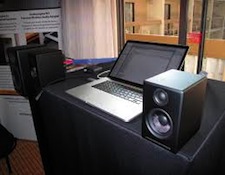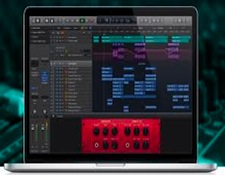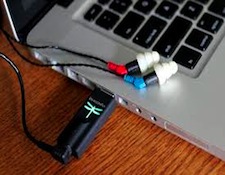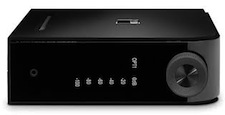It’s the time of year for saving money!
 This morning I got a message from a musician friend inquiring about putting together a stereo. He wrote, “I’m looking to buy a stereo for the first time in well over a decade and would love some advice. I’d like to get something that sounds good without spending too much, and I’m wondering about what exactly to get in this day and age. I don’t buy many CDs anymore but I do have some. I mostly have music on my computer and iPod. That said, I’m tired of listening to MP3 format and want some more fidelity.
This morning I got a message from a musician friend inquiring about putting together a stereo. He wrote, “I’m looking to buy a stereo for the first time in well over a decade and would love some advice. I’d like to get something that sounds good without spending too much, and I’m wondering about what exactly to get in this day and age. I don’t buy many CDs anymore but I do have some. I mostly have music on my computer and iPod. That said, I’m tired of listening to MP3 format and want some more fidelity.
So do I need a traditional amp? And what kind of speakers would you recommend? Is there digital to analog technology to covert my digital music as I listen? If so, do I need to buy songs in a different format? I’d really appreciate your feedback and advice. thanks!”
Rather than immediately recommend particular products (that’s for later), I want to first look at “the workflow” of playing digital music. Before you can play music you have to HAVE music. Digital music used to come only on physical media such as CDs, but now is primarily available as files via Internet downloads. Whether your music comes from CDs or directly via the Internet, all your music should be kept in a one central location – you music library.
What’s a music library? Basically it’s a folder on your computer where all your music is located. I keep all my music in a Network Assessable Storage or a NAS drive that any computer with local network access can use.
Some programs, such as iTunes let you “rip” CDs directly into a music library, (I’ve always hated this term “rip”, dating from when it was possibly illegal to move music files off of a CD onto your computer; it implies some sort of violent or illegal act, neither of which is the case.) The first thing I do when I get a new CD is rip it into my library.
 This is a good place to delve into digital formats. MP3 is a digital format; in this case a lossy (it throws away data) format that makes music files smaller and easier to store. MP3s are a compromise for storage sake. In 2013 there’s no need to use the MP3 format (except for your smartphone) since storage has gotten so inexpensive, there is no reason to use any format that throws away data. If you use iTunes as your ripping program you will need to go into the “import settings” and change the default, which is 320 MP3, to AIFF or WAV, both of which are full-resolution formats with no data loss. If you need MP3 files for your smartphone iTunes can automatically generate these files while copying music onto your phone.
This is a good place to delve into digital formats. MP3 is a digital format; in this case a lossy (it throws away data) format that makes music files smaller and easier to store. MP3s are a compromise for storage sake. In 2013 there’s no need to use the MP3 format (except for your smartphone) since storage has gotten so inexpensive, there is no reason to use any format that throws away data. If you use iTunes as your ripping program you will need to go into the “import settings” and change the default, which is 320 MP3, to AIFF or WAV, both of which are full-resolution formats with no data loss. If you need MP3 files for your smartphone iTunes can automatically generate these files while copying music onto your phone.
Once a CD is ripped or a file downloaded into your music library you can play it back through any number of music playback Apps. iTunes is the most ubiquitous of these playback programs, but other free and paid Apps are available for both the PC and Mac.
]]> Most computers have some kind of internal soundcard for playing back music. Except in rare cases, you can get better sound by moving the “soundcard” out of your computer and into a separate, dedicated component called a Digital to Analog converter or DAC. DACs have an advantage of being able to handle a wider variety of formats than most internal solutions (including DSD and higher resolution, up to 192/24), and do it with better sound quality. DACs come a bewildering variety of shapes, sizes, and prices from lipstick-sized units priced under $200 to state-of-the art DACs with six-figure pricetags.
Most computers have some kind of internal soundcard for playing back music. Except in rare cases, you can get better sound by moving the “soundcard” out of your computer and into a separate, dedicated component called a Digital to Analog converter or DAC. DACs have an advantage of being able to handle a wider variety of formats than most internal solutions (including DSD and higher resolution, up to 192/24), and do it with better sound quality. DACs come a bewildering variety of shapes, sizes, and prices from lipstick-sized units priced under $200 to state-of-the art DACs with six-figure pricetags.
A DAC supplies you with a line-level analog signal. The next step is to get that analog signal coming out of a pair of speakers. This can be done one of several ways. You can hook your DAC up to an integrated amplifier, which has a preamp-section which lets you choose a source and set the volume level, and a power amplifier which will drive your speakers. You can also use a separate preamplifier and power amplifier, or use powered speakers, which have a preamp and power amplifier built-in. If you like bass I strongly suggest looking into a subwoofer. Even if the speakers you plan to use are considered “full range” a subwoofer will allow them to play louder since it can relieve them of the power-hungry chore of reproducing the lowest frequencies.
Many of the newer DACs can drive headphones directly, which gives you an additional listening option.
 In many ways a computer based audio system is very much like a digital audio workstation except there are no provisions for line-level or microphone inputs. Most computer based audio systems can easily be expanded into full-blown audio workstations merely by adding an Analog to Digital converter and the right software.
In many ways a computer based audio system is very much like a digital audio workstation except there are no provisions for line-level or microphone inputs. Most computer based audio systems can easily be expanded into full-blown audio workstations merely by adding an Analog to Digital converter and the right software.
Now we come to specific hardware suggestions – I’m going to keep this very broad. Rather than particular components I’m going to give you some websites of manufacturers who specialize in entry-level high-performance audio gear. Look around, especially in the sites users’ or support forums. I’m sure that some commenters will add their own fave entry-level manufacturer sites as well.
Good luck, and good listening…
IFI
NAD
Wyred4Sound





